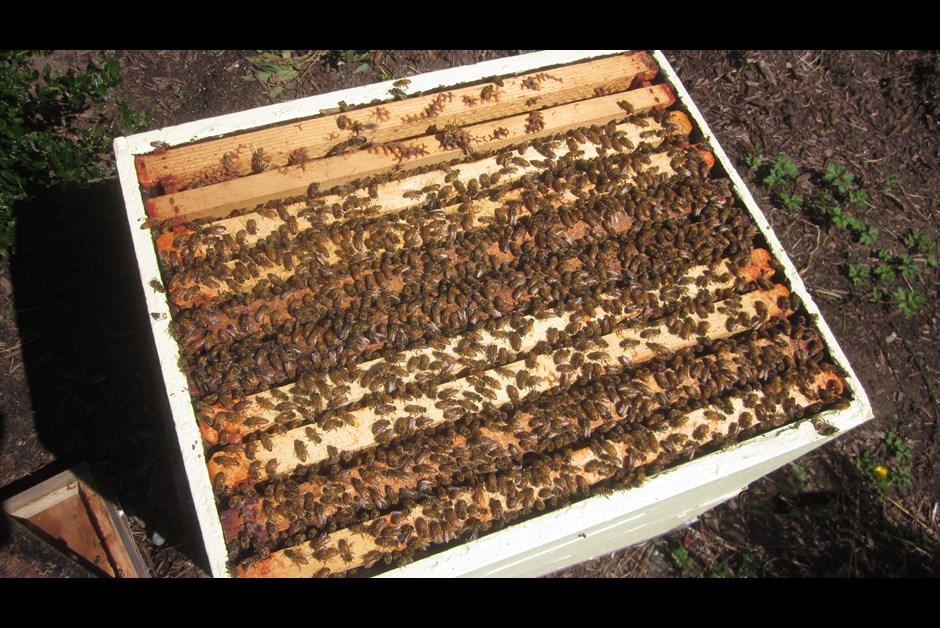Our Bees are Just 'Super'! - The Buzz on Bees with Bee Butler Michael King (May 2015)
Learn more about Fairmont Waterfront or make a booking.
The past 2 weeks have been on and off weather wise and we have seen highs of 17 and 18 degrees downtown and lows close to 7 and 8 . This kind of weather is challenging for us humans to predict in terms of what we wear to work, imagine how the bees must feel trying to decide if they travel out of the hive to forage and if so how far to fly knowing they may get caught in a sudden rain shower or even a burst of hail !
It seems we may be heading towards some nicer more early summer like temperatures over the next several days and this will be welcome news for our pollinators, even our small number of mason bees that we placed out in the herb garden some weeks back who will be looking to complete their life cycle over the next 6-8 weeks and leave next years generation safely tucked up in their cocoons within the tubes we placed in the mason bee nest upon their arrival back in early April.
The honey bees will be making most of their honey for the hive in the next 10-12 weeks and will be growing their hive populations exponentially between now and then as the main nectar flows in the lower mainland begin to intensify week over week.
The Queen who is safe in her brood chamber at the bottom of the hive will be starting to increase her egg laying production by selecting clean and empty cells to drop her egg into before making the critical decision of whether to fertilize or not to fertilize. That question is answered by the size of the cell that the Queen deposits on egg into. If it is 5mm in diameter she will fertilize the egg and it will become a female bee. If the cell has been made slightly larger, around 6mm or slightly larger she will not fertilize the egg she has deposited and it will be a male or drone. A life born without the aid of Y or male chromosomes and in effect only half formed genetically. Only in the insect world would this be possible!
The pictures attached show the bees in the upper ‘super’ commonly called the ‘honey super’, they are busy building comb from wax that they produce from glands on their abdomen and they will expand each cell so it is deep enough to house pollen and nectar which will be their food source for the hive . In the brood chamber below them these empty cells will be the nest where the egg and the larva will live before they hatch out to become fully formed bees.
The bees produce wax for only part of their life span and building wax combs is one of many tasks that the worker bees perform before they move on to become foraging or ‘field’ bees bringing the food source back to the hive to place into the comb. The pollen is called ‘bee bread’ and is used to feed larva who are past the 3 days stage.
Bring on the sunshine and warm weather!
Learn more about our bees and #BeeButler at: http://bit.ly/greenhotelinitiatives
for more #BeeButler posts visit: http://bit.ly/beebutlerblog
